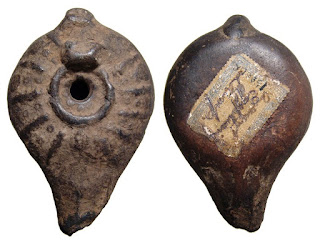Casting light on the Roman oil lamp
 |
Image
source: ancientresource.com
|
Almost every Roman then possessed an oil lamp because it was their primary source of light during the night. Oil lamps were said to be one of the most common items that can be seen in households during the ancient times.
While several materials can be used for creating ancient oil lamps, the Roman versions were usually made of ceramic, particularly gypsum or plaster. This allowed for ornamentation of the lamp to the liking of its creator. The Romans were quite fond of divinity, art, and nature, themes that were apparent in the design of the oil lamps. Sadigh Gallery has a wide collection of uniquely designed oil lamps.
 |
Image
source: numisantica.com
|
Sadigh Gallery is a New York-based art gallery that sells antiquities and also does appraisals. They also help collectors prevent fraud, ripoff, and fake items, ensuring they receive only authentic ancient artifacts. For similar reads, subscribe to this blog.


I am always fascinated with oil lamps.
ReplyDeleteInteresting facts!
ReplyDelete